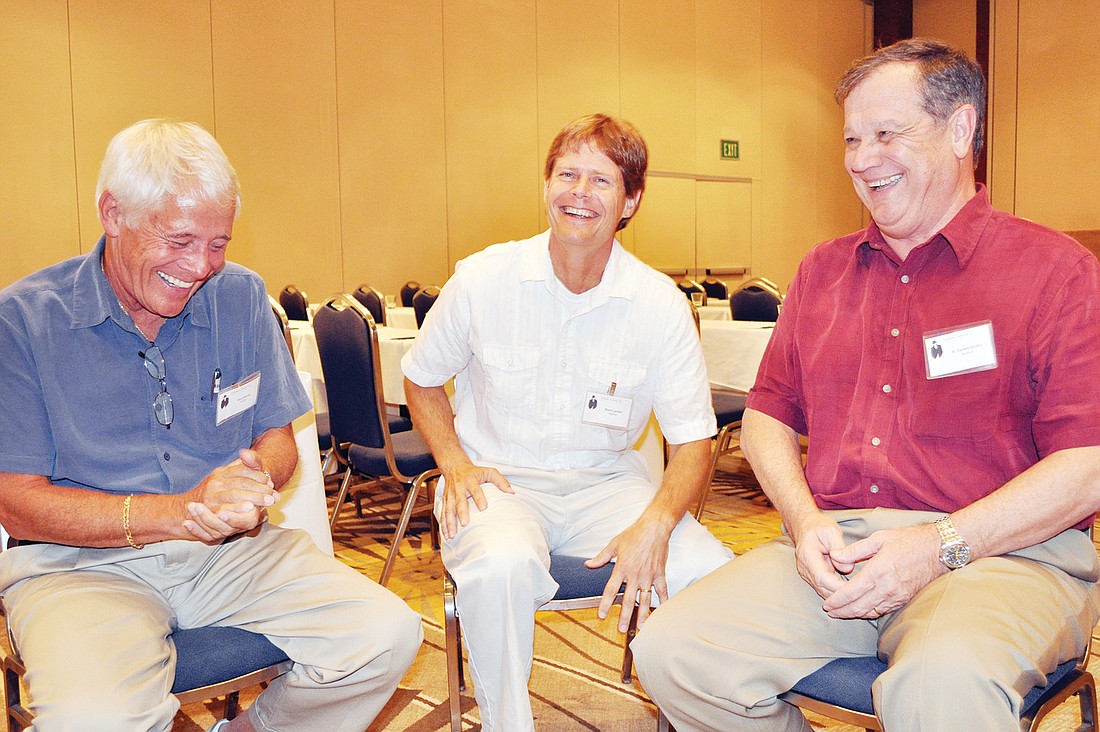- November 28, 2024
-
-
Loading

Loading

When it comes to writing a mystery novel, several local authors, who attended the Mystery Florida Conference last weekend, admitted they draw most of their ideas from everyday life. By having professional experience, stand-up comedian Don Bruns, pilot Ward Larsen and attorney H. Terrell Griffin can add authenticity to their elements of suspense. But there’s also a level of creativity and imagination that is always at work.
In terms of the elements of a mystery novel, first and foremost, the villain must be introduced within the first 50 pages of the novel, they say. Second, as the novel moves forward, the stakes should get bigger and the suspense should build, but the writer mustn’t lose credibility with the reader.
“I think when the readers finish, they have to say, ‘I should have seen that coming,’” Griffin said.
With their newest novels launching just weeks apart, the three authors hope to schedule a joint book signing event for December.
The plot
Bruns: Tim Dorsey has always these serial killers, who puts guys into a barrel and puts plaster of Paris in there and the guys end up talking to each other inside while it’s hardening. Or, he beheads them by cutting their heads off with a wire.
Griffin: You can’t decide someone is going to jump 20 feet over a wall. It has to be plausible. You’re looking at the elements of the set-up — what gets this guy involved and why does he feel the need to get involved.
Larsen: As a writer, you know the beginning and end, but the middle, you have to keep the train going and keep it interesting. Sometimes you get into a box and have to go back.
The protagonist
Bruns: The protagonist has to find out what it is that’s put him in danger with the bad guys.
Larsen: Maybe there’s a guy who kicks a dog, and the villain goes after him and kills him.
Griffin: But the guy who kicked the dog may have been running a soup kitchen. Writers are worse than lawyers sitting around and talking — we have sick minds.
The villain
Bruns: The villain has to be multidimensional — not just the bad guy.
Whether you hate or love the villain, he has to have character. You can like or hate the quality; he can be a nice guy, member of the church choir, but maybe he had to do drugs or hustle women. Early in the novel, you’re not aware of how bad he is.
Larsen: Who is your favorite villain? Most people say “Silence of the Lambs.”
Griffin: I’ve had villains who are pillars of the community and others who are mean, nasty people. It’s a control thing.
The weapon
Bruns: To me, the situation where damage is done has to be more inventive than a gun. There’s a book where the situation is two guys taking a guy out of the bar and pouring Drano down his throat. That’s inventive. Or stuffing a grenade down his pants — I just made that up.
Larsen: Often it’s most interesting when improvised. Let’s see, there’s a table with glass and a pen. What can I do with it? In one book I read, someone changed the address on a guy’s GPS and made him go off into a pond. I killed a guy with a forklift in my last book.
Griffin: I’ve used a pistol, RPH and a 50-caliber machine gun.
Bruns: My favorite Dorsey is when this guy’s at a stoplight in Tampa and there’s loud music behind him. Next thing you know, he’s tied up in a hotel room surrounded by music so loud he explodes.
FAST FACT
If you use an alcohol-based pepper spray followed by a stun gun, you will have one toasty villain.